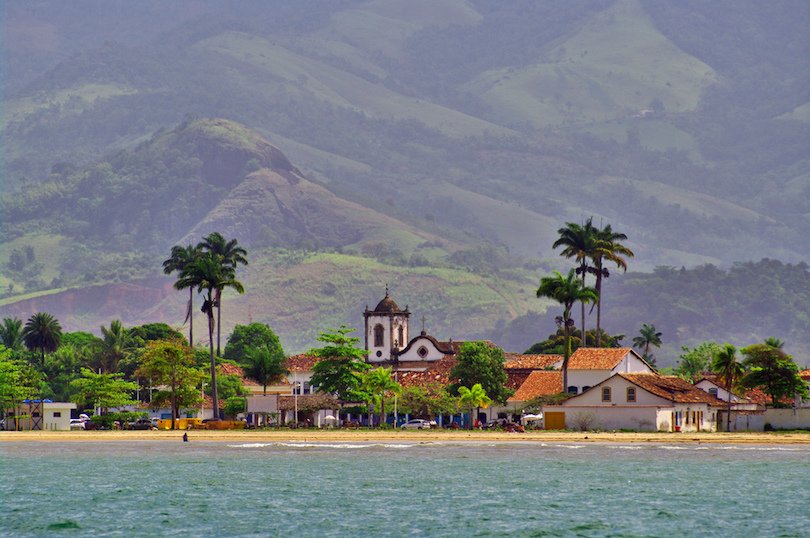17 Best Places to Visit in Brazil is renowned for its prestigious football team, the Rio de Janeiro Carnival, and the awe-inspiring Iguazu Falls, making it a captivating global travel destination. As the largest country in South America, Brazil encompasses a significant portion of the northeastern region and shares borders with all neighboring countries except Chile and Ecuador.
From the expansive Amazon rainforest in the North to the picturesque tropical beaches along the Atlantic coastline, and from the captivating Pantanal wetlands to the bustling metropolises of the Southeast, Brazil offers a plethora of fascinating destinations to explore.
Bonito is one of the 17 Best Places to Visit in Brazil
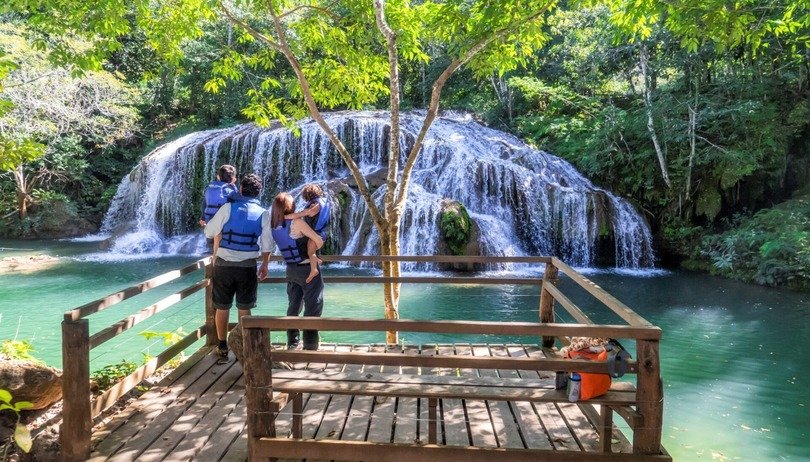
Situated in the southwest corner of Mato Grosso do Sul, the charming city of Bonito offers an ideal gateway to the breathtaking Pantanal region in Brazil. Although the town itself may not offer a plethora of attractions, it has gained recognition as a shining example of sustainable ecotourism in the country.
The surrounding area of Bonito is a haven for nature enthusiasts, boasting magnificent waterfalls, rushing rivers, and expansive sinkholes and caves filled with crystal-clear lakes, perfect for swimming and snorkeling. Additionally, hiking through the verdant rainforest in Serra da Bodoquena National Park is a popular activity, allowing visitors to marvel at the vibrant flora and fauna.
Numerous tour companies operate from Bonito’s pousadas, offering excursions that focus on the Pantanal’s diverse ecology and ecosystems. Some of the most sought-after experiences include snorkeling beneath underwater stalagmites at Anhumas Abyss, embarking on a thrilling canopy walk in the rainforest, and exploring the vast Blue Lake Cave, which happens to be one of the largest flooded caves in the world.
Fortaleza
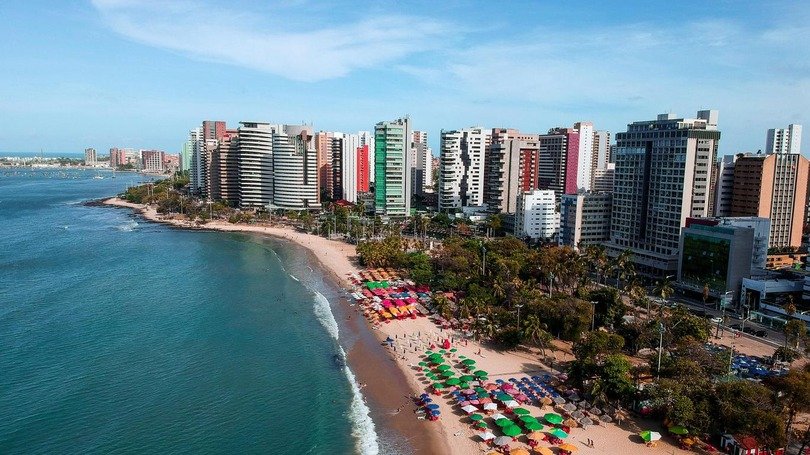
Fortaleza, located on Brazil’s northeastern coast, is a popular tourist destination known for its beautiful beaches, vibrant culture, and dynamic shopping scene. As the capital of the Ceará state, it boasts a mix of colonial and modern architecture that offers a visually appealing experience for visitors. The city’s main squares, such as Praça do Ferreira and Praça José de Alencar, are bustling with restaurants, shops, and street performers, providing a lively atmosphere.
Fortaleza’s urban beaches, stretching for 16 miles, are a major draw for tourists. Praia do Futuro is the most popular beach, but others like Iracema, Mucuripe, and Meireles are also favorites among visitors. These beaches not only offer opportunities for swimming, sunbathing, fishing, and surfing competitions, but they also provide amenities such as hotels, restaurants, and markets. Moreover, Fortaleza serves as a gateway to breathtaking beaches, rolling dunes, and picturesque fishing villages along the Ceará coast.
The shopping experience in Fortaleza is another highlight for tourists. The city’s large textile industry makes clothing affordable, attracting shoppers looking for great deals. Local handicrafts, fresh seafood, and produce can be found in the city’s markets, while the Iguatemi Mall offers a diverse range of products to cater to different tastes and preferences. Whether it’s exploring the beaches, immersing in the local culture, or indulging in a shopping spree, Fortaleza has something to offer for every traveler.
Chapada dos Veadeiros National Park
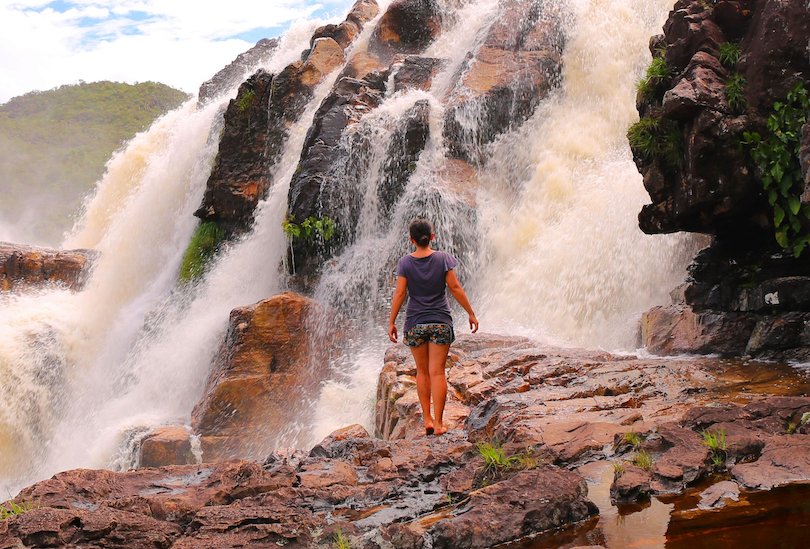
Chapada dos Veadeiros is a true gem waiting to be discovered, boasting of glistening lakes, dramatic waterfalls, and breathtaking landscapes. It is also home to some of the world’s oldest and most diverse tropical ecosystems. This magnificent microregion covers a vast area in the heart of Brazil, located in the state of Goias, just three hours’ drive north of the capital city, Brasilia.
The national park of the same name is the main attraction of Chapada dos Veadeiros, situated on a plateau covered with ancient rainforests. The park is a hiker’s paradise, with its rugged cliffs and canyons, and numerous waterfalls hidden amidst the lush flora and fauna.
The Moon Valley is another must-see destination, featuring lunar-like landscapes that are truly awe-inspiring. Visitors should also take a dip in the many waterfalls and rivers that are scattered throughout the area. When visiting Chapada dos Veadeiros, the best places to stay are Alta Paraiso and Sao Jorge, a small city and village respectively, which are conveniently located near all the major sights.
Parati
Parati, also known as Paraty, is a stunning tourist destination located in the Rio de Janeiro state of Brazil. It is situated along the Green Coast and boasts of tropical forests, emerald sea, waterfalls, and coastal mountains. The city was established as a Portuguese colony on the shores of the Bay of Ilha Grande and is now a popular tourist spot.
The historic center of Parati is the heart of the city and is known for its cobbled streets and multicolored colonial houses. Many of these houses have been converted into bed-and-breakfast accommodations called pousadas. The colonial defense forts are also a major attraction and still have original walls and cannons. The historic center is pedestrian-only, making it a perfect place for a leisurely stroll.
The city is surrounded by several beautiful parks and nature preserves where visitors can explore the natural setting of mangrove forests, waterfalls, and wildlife. There are also indigenous villages that can be visited. The bay offers gorgeous beaches where visitors can enjoy swimming, kayaking, snorkeling, diving, and boat cruises.
Recife
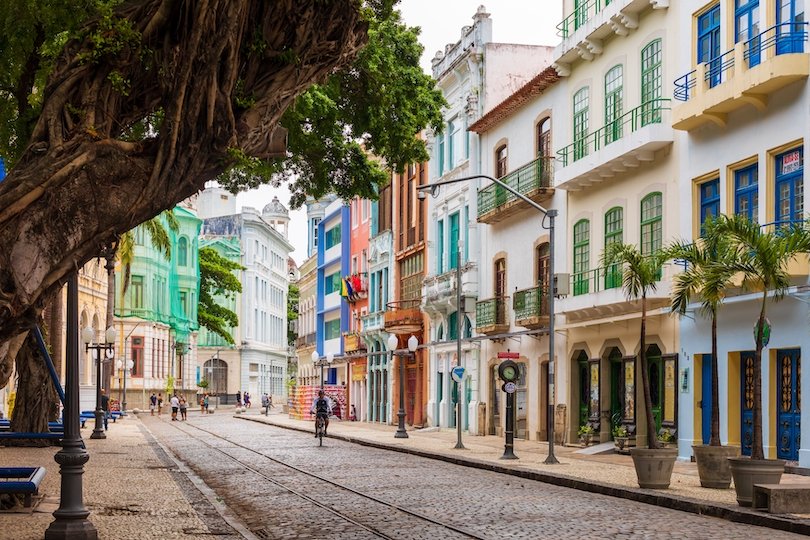
Known as the “Venice of Brazil” due to its abundance of waterways and bridges, Recife holds the title of being the capital of the Pernambuco state and one of the largest and most influential cities along Brazil’s northeastern coast. Nestled amidst lush tropical forests, adorned with numerous islands and rivers, Recife offers a captivating experience with its rich historical old town, picturesque beaches, and vibrant cultural scene.
During the early 17th century, Recife served as a Dutch colony, leaving behind a lasting imprint on the city’s landscape. This influence is particularly evident in the historic district, where a multitude of colonial buildings still stand today. Among these architectural gems, one can find the oldest synagogue in the Americas and the breathtaking baroque beauty of the Franciscan Convent of Saint Anthony, which stands as a testament to Brazil’s rich heritage.
The colorful buildings, shops, and restaurants in Saint Peter Square are not only picturesque but also steeped in history.
If you’re looking for traditional handicrafts, medicinal herbs, and locally produced food, the Sao José Market is the place to be. It’s a bustling hub of activity and a must-visit for anyone interested in experiencing the local culture.
Recife boasts some of the best beaches in Brazil, and Boa Viagem is the most popular among them. With its pristine white sands, clear water, and coral reef, it’s the perfect spot to relax and soak up the sun. Plus, there are plenty of hotels, restaurants, and bars nearby to keep you entertained.
Chapada Diamantina National Park
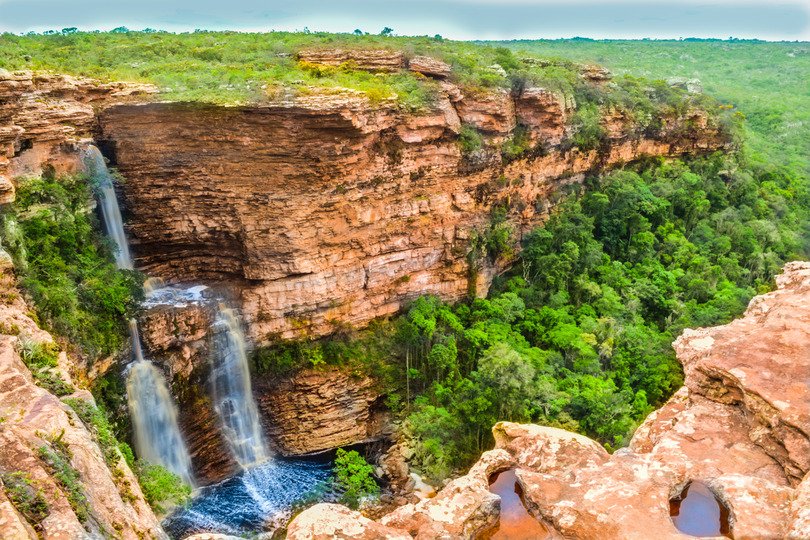
Chapada Diamantina National Park was established in 1985 with the aim of safeguarding and showcasing its breathtaking landscapes and diverse ecosystems. Located in the central region of Bahia state in northeastern Brazil, the park is a popular destination for nature enthusiasts and adventure seekers. The park boasts a range of natural wonders, including towering mountain ranges, sprawling valleys, gushing rivers, and majestic waterfalls.
Due to its location on a plateau, the park is characterized by its rugged terrain and mountainous landscape, with some peaks rising over 2,000 meters. The plateau is lined with steep, rocky cliffs and dotted with numerous stunning waterfalls, including the impressive 380-meter-high Cachoeira da Fumaca, which is the tallest waterfall in Brazil. The park’s rugged terrain is also punctuated by vast, cavernous caves, with Lapa Doce and Pratinha being two of the largest.
Chapada Diamantina National Park is gaining popularity among tourists due to its varied terrains and stunning vistas. Tourists have the option to camp or reside in one of the quaint towns, such as Lencois and Vale de Capao. The park offers a range of activities, including horseback riding, hiking, and swimming in the rivers and pools.
Olinda
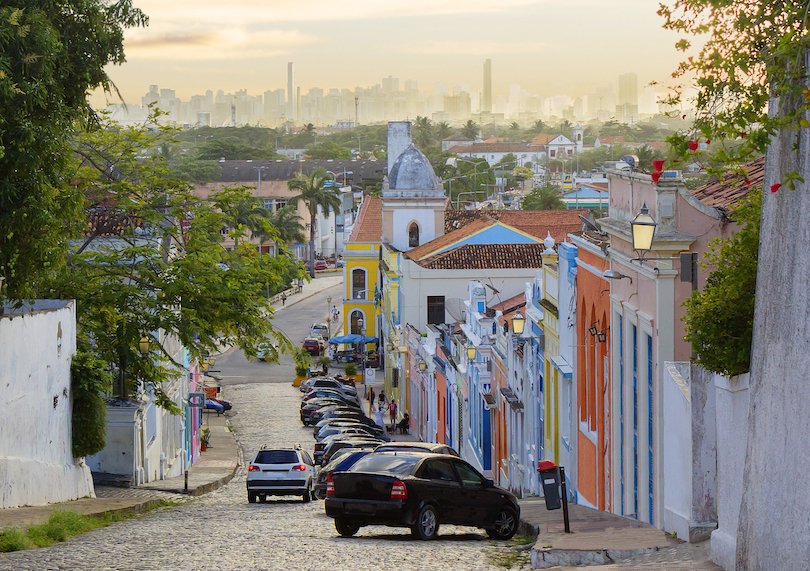
Olinda, situated on the Atlantic Coast of Brazil in the state of Pernambuco, is renowned as one of the country’s most well-preserved colonial cities. Originally established by the Portuguese in the early 16th century, it held the status of the state capital until it suffered destruction at the hands of the Dutch. Consequently, Olinda lost its autonomy to its neighboring city, Recife.
Nestled atop a charming hill, surrounded by lush trees, Olinda’s historic downtown area is a true gem, boasting an abundance of colonial churches, vibrant old houses, and a multitude of artisan studios. The city’s deep appreciation for art is evident through its numerous shops and markets, which offer a wide array of paintings, ceramics, sculptures, and handicrafts.

Olinda’s vibrant Carnival celebration takes place annually and sets itself apart from the festivities in Rio de Janeiro and Salvador. Unlike the nighttime celebrations in these cities, Olinda’s festival shines during the daytime and showcases the rich music, dances, and traditions of African culture. The Carnival in Olinda is a spectacle of parades, extravagant costumes, enormous puppet dolls, street parties, and the infectious rhythms of maracatu and frevo.
Moreover, even beyond the Carnival season, Olinda boasts a lively culture that thrives throughout the year. Every weekend, the city comes alive with parties, bustling bars, vibrant nightclubs, and singing groups that serenade the streets with traditional songs.
Pantanal
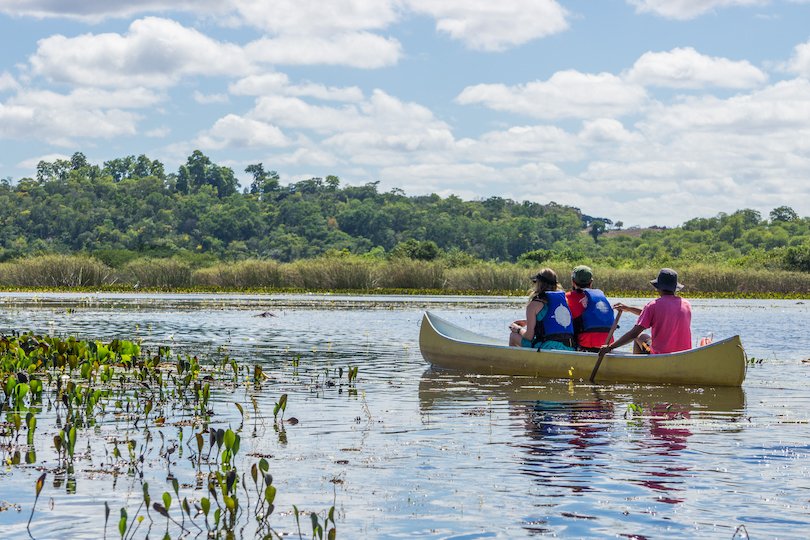
Olinda’s Carnival celebration is a vibrant event that takes place annually. Unlike the festivities in Rio de Janeiro and Salvador, Olinda’s carnival stands out as it primarily occurs during the daytime and showcases the music, dances, and traditions of African culture. The carnival in Olinda includes parades, extravagant costumes, enormous puppet dolls, street parties, and the captivating rhythms of maracatu and frevo.
Moreover, even outside of the carnival season, Olinda boasts a lively culture that comes alive every weekend. The city buzzes with a wide range of activities, including parties, bars, nightclubs, and singing groups that serenade the streets with traditional songs. This animated atmosphere adds to the charm of Olinda, making it a captivating destination.
Moving on to a different topic, the Pantanal is an expansive region that spans across western Brazil, as well as parts of Paraguay and Bolivia. It is renowned as the world’s largest and most diverse tropical wetland area. The Pantanal’s breathtaking scenery and incredible wildlife have made it increasingly popular among visitors, despite the challenges posed by its remote and watery nature.
During the rainy season, approximately 80 percent of the floodplains become submerged, making it necessary to navigate the area by plane or boat. However, the effort is well worth it. The Pantanal’s vast marshes and grasslands are teeming with an astonishing variety of flora and fauna, creating a truly remarkable ecosystem.
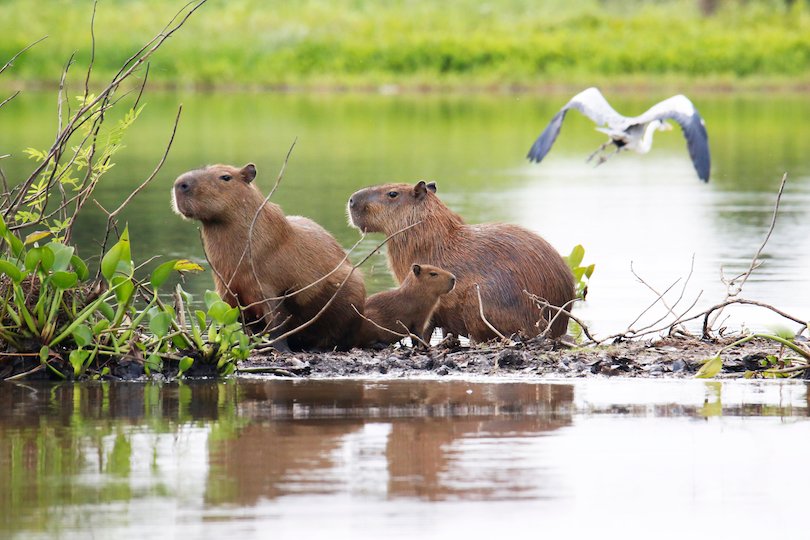
In addition to discovering the picturesque terrains encompassing swamps, savannas, lakes, forests, and wetlands, tourists are guaranteed to encounter numerous caimans and capybaras. The most thrilling aspect of any excursion is catching sight of the South American jaguar; the Pantanal stands as the ultimate destination on the continent to catch a fleeting glimpse of this elusive creature.
Florianopolis
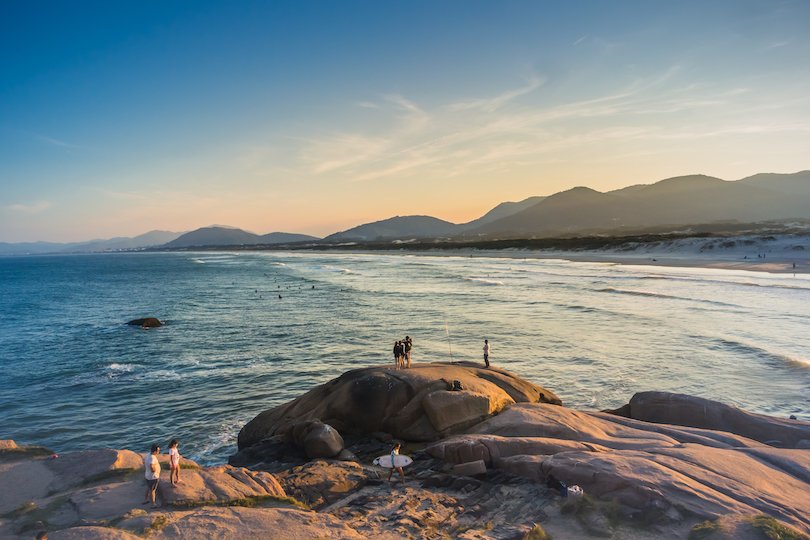
Florianopolis, the capital of Santa Catarina state, is situated in the southern region of Brazil. This captivating city is unique as it is divided between the mainland and a picturesque island. Renowned for its breathtaking landscapes, Florianopolis attracts a multitude of tourists and is widely regarded as one of the most desirable places to reside in the country.
Florianopolis holds great significance as an economic, cultural, and political hub. It boasts a contemporary ambiance with numerous expansive shopping centers, trendy restaurants, vibrant bars, and lively nightclubs. Despite its modernity, the city maintains a relaxed atmosphere, with each neighborhood possessing its own distinct character.
The true allure of Florianopolis lies in its abundance of magnificent beaches. While basking in the stunning coastal scenery is a heavenly experience, the city also offers striking sand dunes, glistening waterfalls, and lush mountains covered in forests. Visitors can also explore a vast lagoon. Popular activities include hiking and cycling around the enchanting ‘Magic Island,’ as it is affectionately known, as well as engaging in thrilling paragliding and various watersports.
Manaus
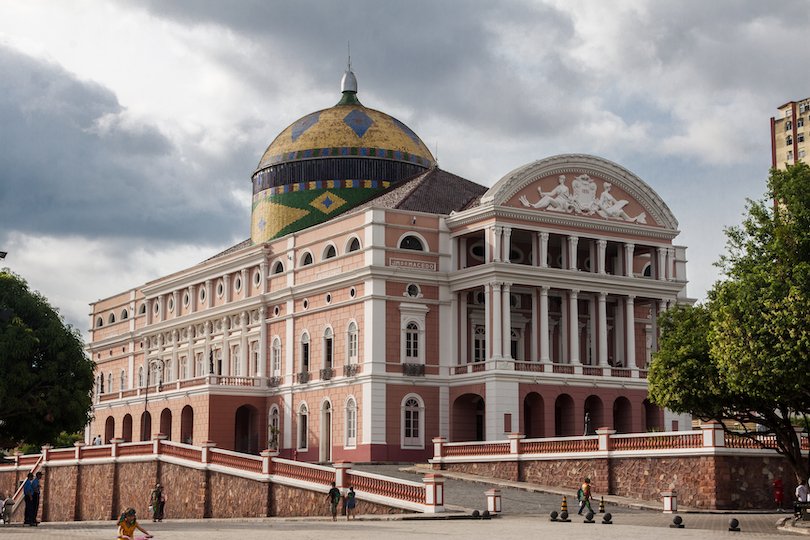
Manaus, located in the Amazonas state of northwestern Brazil, holds significant importance as a tourist hub due to its role as the entry point to the vast Amazon rainforest.
With a rich history rooted in the thriving rubber industry of the early 20th century, Manaus has evolved into the largest metropolitan area in Northern Brazil. This vibrant city boasts several iconic landmarks, including the renowned Amazonas Opera House, the bustling Adolpho Lisboa Market, and the majestic Rio Negro Palace.
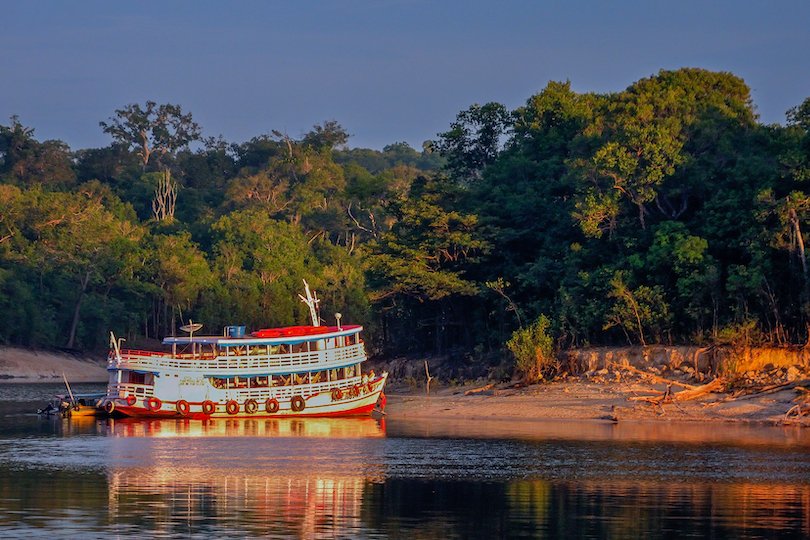
In addition to being a vital commercial center for various manufacturing industries, the port of Manaus also serves as the primary departure point for river tours into the Amazon rainforest. These tours offer captivating sights such as the Paricatuba Waterfall, Love Cascade, and glimpses of the Pied tamarin, Brazil’s most endangered monkey. Another remarkable attraction is the Meeting of the Waters, a natural phenomenon where the Negro and Solimões rivers flow alongside each other for over three miles without blending. Apart from the rainforest and river, Manaus also boasts public parks, a botanical garden, and a zoo. Additionally, there are several beaches to explore, including Ponta Negra, which features a variety of restaurants, bars, and hotels.
Salvador
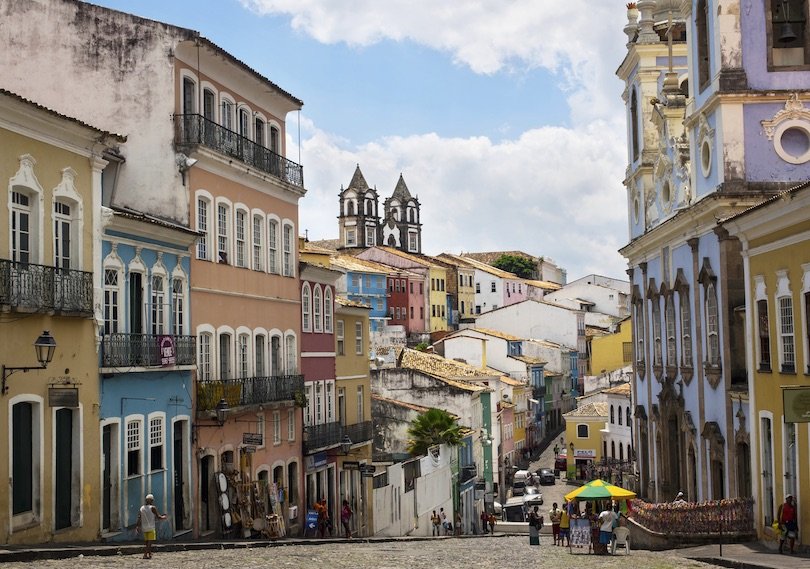
Salvador, one of Brazil’s premier tourist destinations, combines a rich history, picturesque beaches, vibrant culture, and an extravagant Carnival celebration. As one of the oldest cities in the Americas and the capital of Bahia state, Salvador showcases its past as a prominent hub for sugar and slave trade. The Pelourinho or Old City stands as a testament to this history, boasting colonial architecture, magnificent churches, and plazas that once witnessed significant events. Within the old quarter, visitors can also explore a plethora of restaurants, bars, art galleries, and handicraft shops. In contrast, the New City district of Salvador embraces modernity with its shopping megaplexes, entertainment venues, golf courses, and residential neighborhoods.

Salvador, located on the shores of the Bay of All Saints, presents an array of stunning beaches perfect for sunbathing, swimming, and surfing. Among the top choices are Porto de Barra, Flamengo, and Stella Maris.
An undeniable highlight of Salvador is its renowned Carnival celebration, drawing in a massive crowd each year. Recognized as one of the world’s grandest festivities, this extravagant event showcases music, dancing, parades, elaborate costumes, and vibrant street parties.
Foz do Iguacu
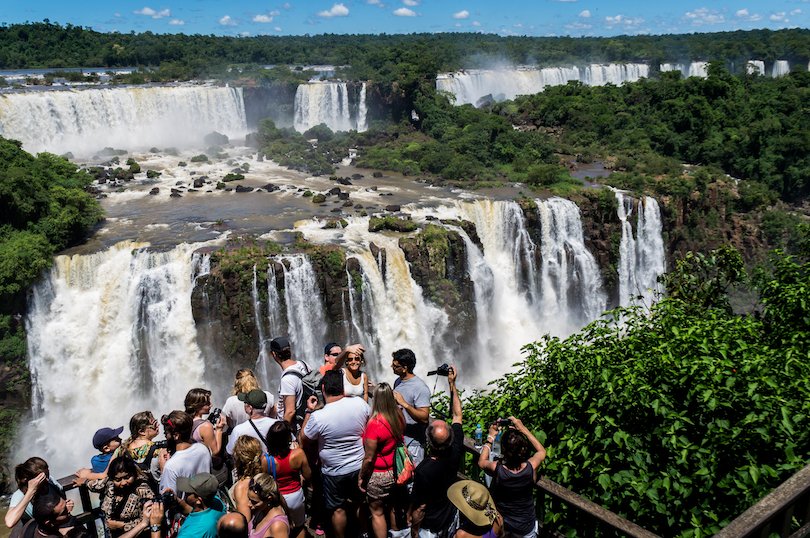
Iguazu Falls, an astonishing natural wonder, spans across the border of Argentina and Brazil. Its immense size and magnitude have often drawn comparisons to Niagara Falls and Victoria Falls. Enveloped by dense rainforest, this remarkable waterfall system stretches for nearly three kilometers, making it the largest in the world.
Every passing second, an immeasurable volume of water from the Iguazu River cascades over the Parana Plateau, descending onto the rocks and pools beneath. While 80 percent of the falls lie within Argentina, it is the Brazilian side that offers the most breathtaking vistas, particularly the awe-inspiring Devil’s Throat canyon.
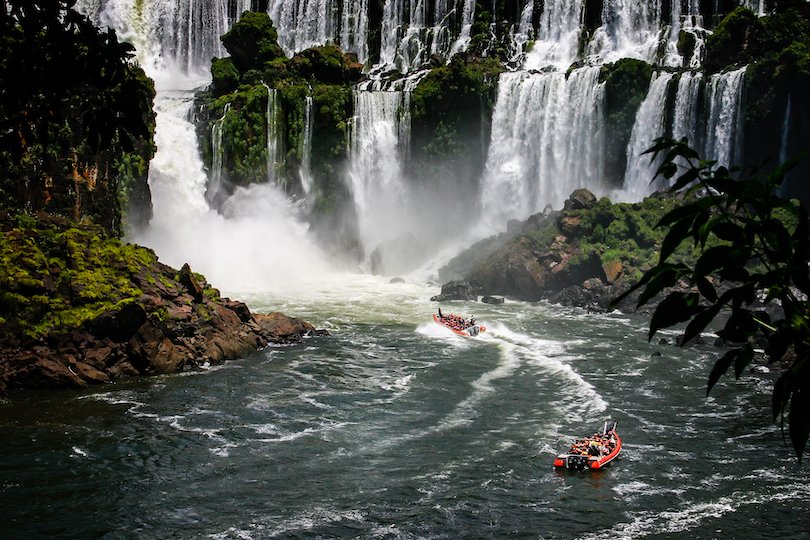
In addition to marveling at the magnificent Iguazu Falls and being captivated by its thunderous sound, tourists have the opportunity to embark on a thrilling boat excursion beneath the cascades or explore the lush rainforest that envelops them through invigorating hikes. Serving as the entrance to the falls from the Brazilian perspective, Foz do Iguaçu is a sizable city that adheres to Brazilian safety standards, ensuring a reasonably secure environment for visitors.
Rio de Janeiro[SEE MAP]
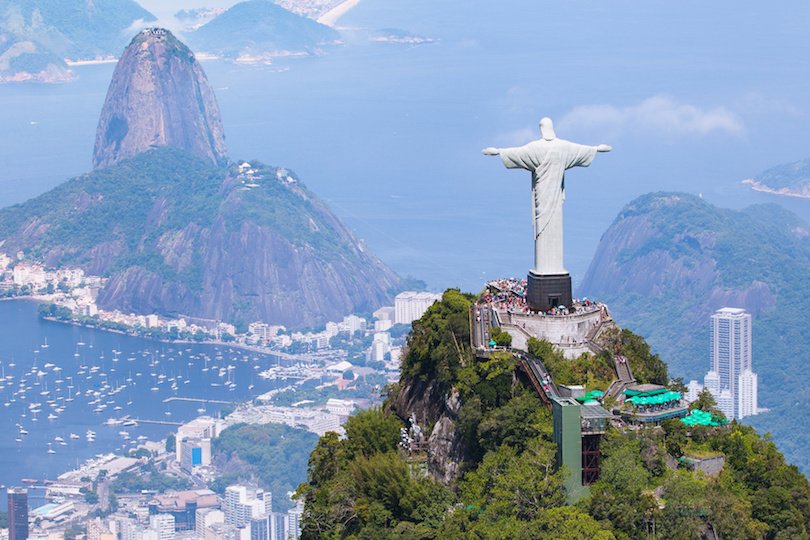
Rio de Janeiro, situated in southeastern Brazil, stands out as the liveliest and most thrilling destination on the planet. Renowned for its majestic mountains, stunning beaches, and the vibrant Carnival festival, it is no wonder that Rio de Janeiro attracts the highest number of visitors in South America.
Nestled on a colossal harbor, Rio de Janeiro boasts an array of natural wonders, including the iconic Sugarloaf and Corcovado mountains, as well as the world-famous beaches of Copacabana and Ipanema. Adding to its allure is the sprawling Tijuca National Park, an expansive urban forest teeming with indigenous flora and fauna.
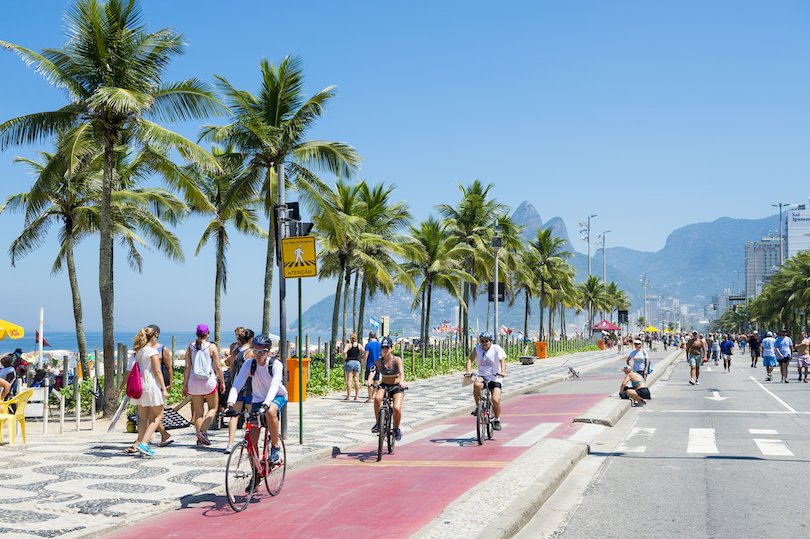
The colossal statue of Christ the Redeemer, situated on top of Corcovado mountain, stands as the city’s most renowned symbol. Alongside this iconic landmark, there are other significant points of interest such as historic fortresses, former presidential palaces, and the colossal Maracanã Stadium, which ranks among the largest football stadiums globally.
Regrettably, Rio is also widely recognized for its high crime rates and impoverished favelas. These favelas, situated on the city’s numerous mountain slopes, consist of substandard housing and are often in stark contrast to the middle-class neighborhoods nearby.
Rio de Janeiro is renowned for hosting one of the largest Carnival celebrations in the world. This vibrant event is characterized by lively parades, elaborate costumes, energetic dancing, captivating music, dazzling fireworks, and lively street parties. Beyond the festivities, the city comes alive every night with a plethora of bars and dance clubs, creating a bustling atmosphere.
Jericoacoara
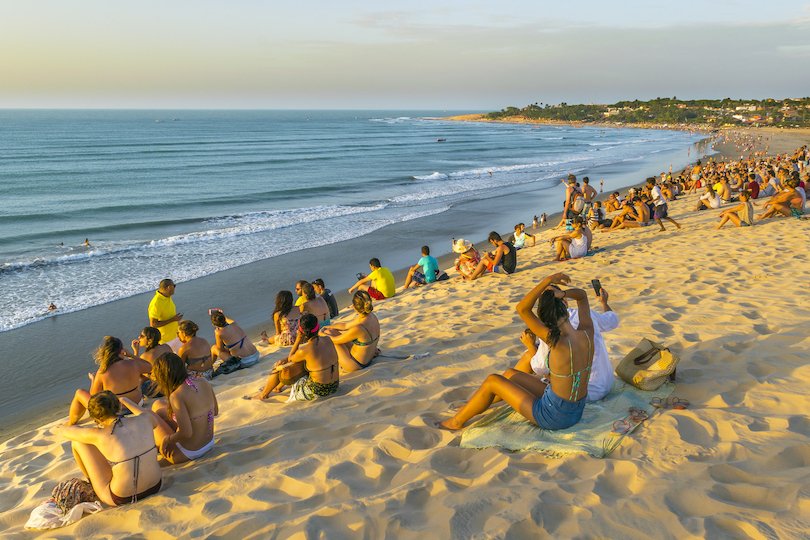
Jericoacoara, a charming and serene town located in the state of Ceara in northeastern Brazil, is nestled between the Atlantic Ocean and a national park of the same name. Known as Jeri or Jijoca, this secluded seaside town is renowned for its breathtaking scenery and is becoming an increasingly popular tourist destination.
In addition to its stunning beaches, Jeri is surrounded by picturesque dunes and lagoons that offer a plethora of recreational activities, including hiking, swimming, and water sports. Exploring the area on horseback or in dune buggies is an excellent way to take in the magnificent scenery, with Pedra Furada, or the ‘Arched Rock,’ being the most iconic sight and symbol.
Although visiting Jericoacoara can be challenging due to its remote location, the effort is well worth it for its magnificent scenery, abundance of outdoor activities, and surprisingly vibrant nightlife.
Sao Paulo
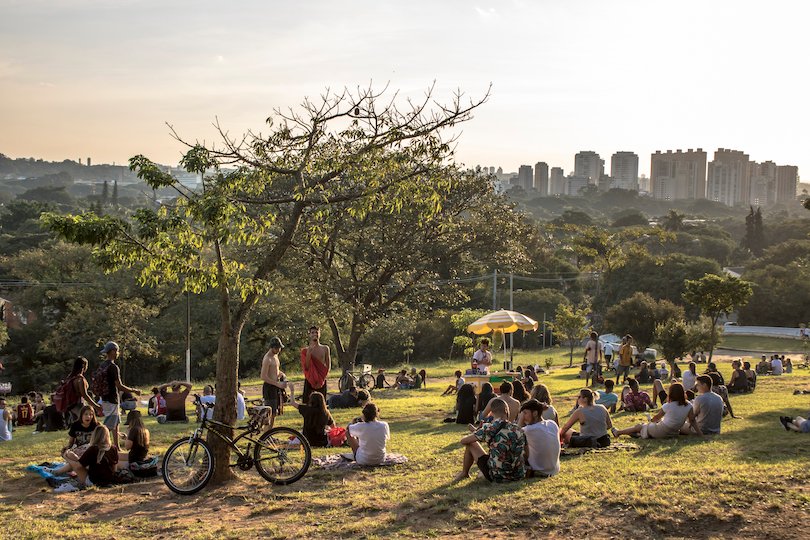
Sao Paulo, situated in southeastern Brazil, not only holds the title of being the largest city in Brazil but also ranks among the largest cities in the world in terms of population. Renowned for its towering skyscrapers, diverse culinary offerings, and vibrant cultural scene, Sao Paulo serves as a melting pot for various ethnic groups from across the globe, including the largest Japanese community outside of Japan.
The city is divided into distinct old and new districts, with Paulista Avenue serving as the bustling epicenter. This vibrant strip teems with an array of businesses, shopping malls, art galleries, theaters, and restaurants. Despite its reputation as a concrete jungle, Sao Paulo surprises with its abundance of public parks and even sections of the Atlantic rainforest.
Brasilia
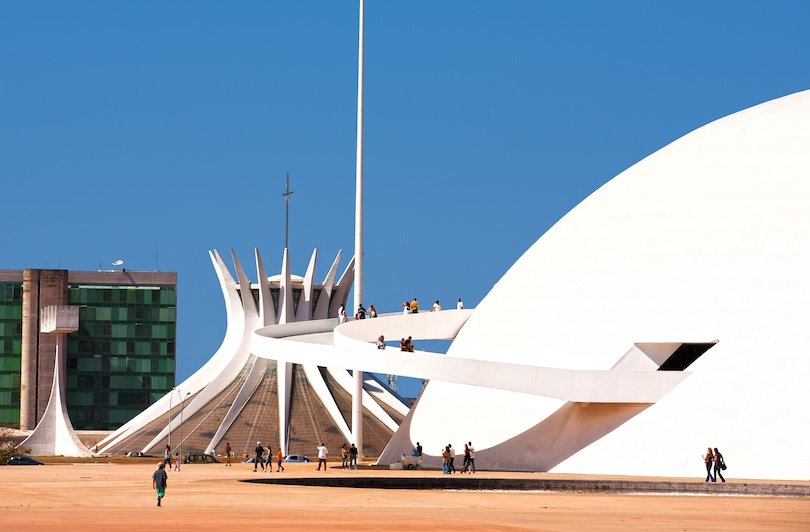
In 1960, Brasilia was established as the capital of Brazil, situated in the Brazilian Highlands. The city was planned and developed by former President Juscelino Kubitschek in the late 1950s, with the aim of creating a utopian city. The modern infrastructure of Brasilia is shaped like an airplane, with each section serving as a distinct district, including government, commercial, residential, and cultural areas.
Brasilia’s innovative and unique architecture serves as a magnet for numerous tourists. Among the notable landmarks is the Three Powers Square, which accommodates the Presidential Palace, the Congress, and the Supreme Court. Other significant structures include the Palácio da Alvorada, the official residence of the President, and the TV Tower. A visit to the Brasilia Cathedral is highly recommended, as its glass roof resembles hands reaching towards the heavens.
Furthermore, apart from its striking combination of concrete, steel, and glass, Brasilia boasts a vast artificial lake and numerous picturesque parks that offer a wide range of recreational activities. Additionally, as the capital, Brasilia plays a crucial role as a transportation hub for travel within Brazil.
Ouro Preto
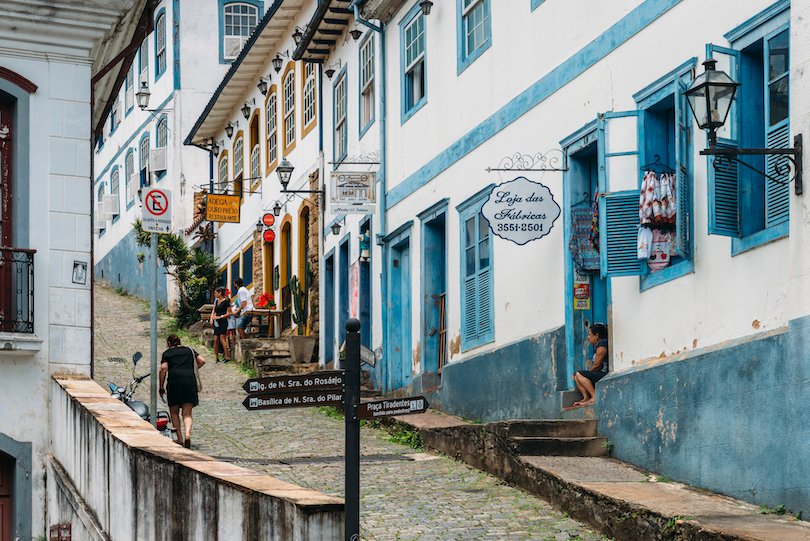
Ouro Preto, nestled in the mountains of Minas Gerais, stands out as Brazil’s most charming, renowned, and well-maintained colonial town. During the Brazilian Gold Rush, it became one of the primary hubs of wealth and prosperity, attracting power and prestige to its streets. Its historic center, spread across a range of hills, boasts steep, winding cobbled streets that lead past stunning old structures and 18th-century churches. Visitors can also explore several fascinating museums, many of which showcase the artwork of Aleijandinho or Ouro Preto’s mining history.
A significant number of individuals come to the city to explore its abundant history and culture, or to embark on guided tours of the numerous mines. Over the past few years, the vibrant carnival of Ouro Preto has been drawing an increasing number of enthusiasts to its age-old streets.




